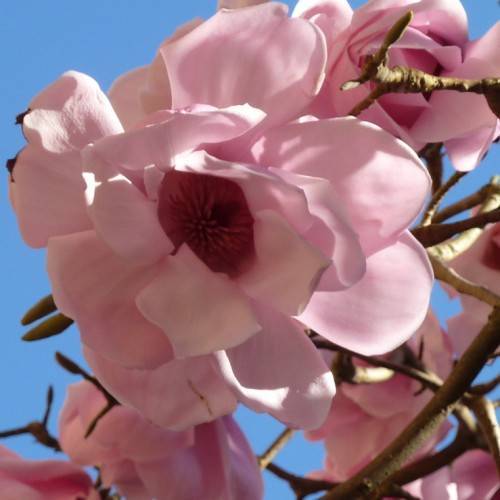
Caerhays Belle magnolia
Magnolia 'Caerhays Belle'
Cycle:
Perennial
Watering:
Minimal
Hardiness Zone:
5
Flowers:
Flowers In Summer
Sun:
Filtered shade, Part sun/part shade
Soil:
Bog
Fruits:
Fruits In Summer Ready In
Leaf:
Yes
Growth Rate:
High
Maintenance:
Low
Drought Tolerant:
Yes
Care Level:
Medium
watering
Watering for Greater Woodrush should be done 2 or 3 times per week in the summer months, allowing the soil to dry out slightly between watering. In the winter and cooler months, reduce the frequency to every 2 weeks or once a month, depending on the level of sunlight, temperature, humidity and how established the plant is. Watering should be done deeply, watering the roots and area around the plant as much as possible. Avoid overwatering, as Greater Woodrush is fairly drought tolerant and can be prone to rot with too much water.
sunlight
Greater woodrush (Luzula sylvatica) requires full sunlight for healthy growth but can tolerate several hours of shade each day. This plant is ideally suited for sunny, well-drained soils in habitats ranging from full sun to partial shade. In partial shade, it should still receive at least 4-6 hours of direct sunlight each day. During the summer months, it is best to allow the plant to soak up direct sunlight for most of the day. In the winter months, it should receive between 1-3 hours of direct sunlight a day.
pruning
Greater woodrush (Luzula sylvatica) is a type of grass-like perennial that can be pruned to keep it looking healthy and attractive. Pruning should take place in late winter or early spring just before the new growth begins. Specifically, it should occur from late February to late March. Dead and damaged stems should be trimmed with sterilized pruning shears to about 6 inches above the ground. This will encourage healthy new growth, which will help promote lush foliage, as well as additional flowering. If larger, older plants are pruned, do not remove more than about 1-third of the plant’s growth in a single year. This will help reduce stress and ensure the mature plant remains healthy and looks its best. Pruning is important for a greater woodrush because it helps keep the mature plants looking full and attractive without causing damage.
